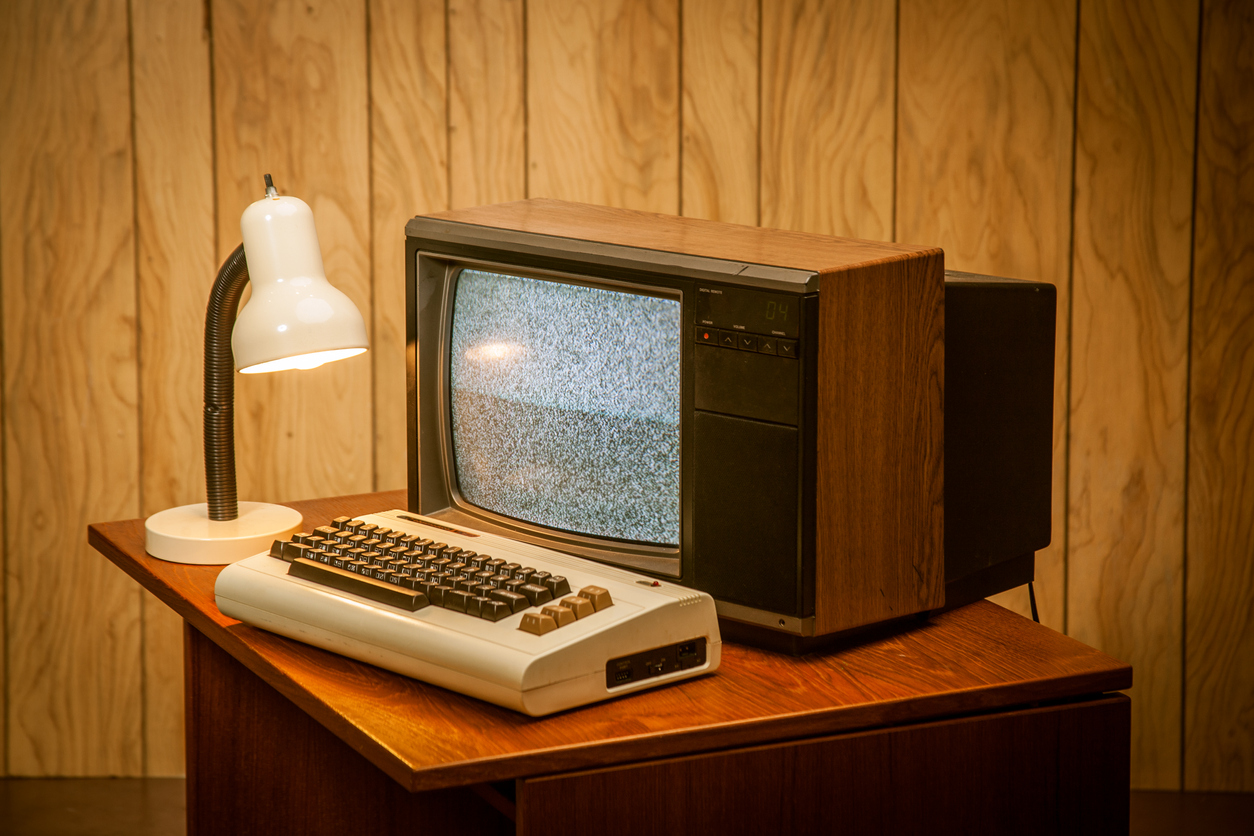The history of home internet usage is a fascinating one, but where home internet use is trending is something to behold.
Home Internet: Let’s Dial It Up A Notch
Home internet has come a long way. Its early iterations were not what we’re used to today. Although the idea of the internet has been around since the Cold War (a network of networks for data transfer), its first commercial availability didn’t happen until 1992. Sprint decided to take a stab at the not-yet-popular internet with SprintLink, the first dial-up internet service available to the public.
Although most searches about dial-up internet these days have to do with infamous sound when connecting, home internet through dial-up was revolutionary. You had to use a phone line to connect to the internet (one of those cords you may or may not connect to a landline today). Home internet was so exclusive, less than 2% of the U.S. population was connecting to the world wide web, and it only went up to 10% by 1995. A modem at the time was also quite a luxury, costing consumers up to $500!
The most exciting aspect of dial-up internet at the time was the connection speed. By 1998, the fastest speed you can hope to get was 56 Kbps. For reference, there are 1000 kilobits in a megabit. Internet speeds today start at 25 Mbps. At only 56 Kbps, streaming your favorite movies, games, and music was not possible. Companies like Napster and Limewire were popular forms of P2P (peer-to-peer) music and movie sharing, but that only lasted for so long. These music and movie files could take hours or days to download. Home internet was a luxury back in the day, but newer technology has made it more affordable, accessible, and able to do so much more today.

What Home Internet Usage Looks Like Today
Over the last decade, home internet usage has seen a dramatic change. Today, streaming movies in 8K and playing video games online with friends and family in different parts of the country is not so much a luxury as it is an expectation. Because of faster speeds (starting at 25 Mbps and going as high as 1000 Mbps) and easier accessibility (modems are more affordable and internet rates are reasonable), the average household uses 38x the amount of internet data as ten years ago. Multiple devices can connect to one modem with no connectivity or speed issues.
While Sprint might have been the first to jump into the commercial internet world, multiple providers have hopped on the bandwagon and now provide services of their own. From Verizon to Frontier and everything in between, internet service providers are not short in supply. AT&T also offers internet services at affordable prices and high speeds to accomplish any task you have on your plate. With many people working from home due to the 2020 pandemic, high-speed internet is more essential than ever.
Home Internet: Playing, Streaming, and Working From Home
COVID-19 shifted the way we lived our lives. No shift was more significant in changing home internet usage than the mass amount of people who started working from home. Home internet usage went up over 33% in 2020 and continues to climb. People relied on their internet services more than ever before, from video conferencing to downloading files with a working-from-home environment.
Quarantining at home also made homebodies of those who might’ve been considered extroverts. Because people stayed home more often than not, they needed their internet to be reliable more than ever. How else could they binge-watch the latest TV sensation on their favorite streaming platform? What about the late nights where they would game all through the night on their next-gen consoles? Internet connectivity and reliability were at an all-time high (81% of Americans connect to the internet every day). Today, we continue to feel the effects of a transitioning world into a more internet-dependent society.

Where do we go from here?
As time moves along, internet technology gets better and faster. From dial-up internet in the early 90s to high-speed fiber internet today, internet speeds are faster than they ever have been before. Downloading movies and TV shows through P2P services is a thing of the past—now we stream video instantly. In addition to checking your email and surfing the web, you can now play video games and video chat with your friends and family from across the country. There used to be only one connection to the internet at a time through an ethernet cord. Now you can connect multiple devices to one modem over Wi-Fi. Home internet usage continues to evolve into what our current situations call for. Whatever your current situation calls for, AT&T is there.
